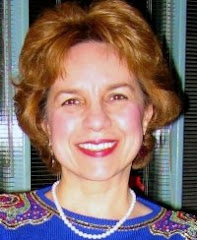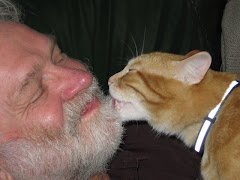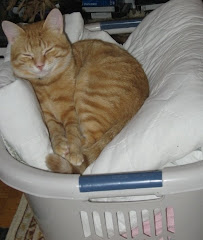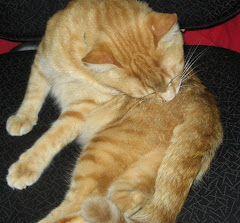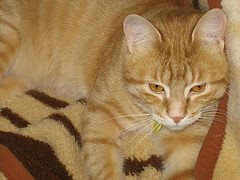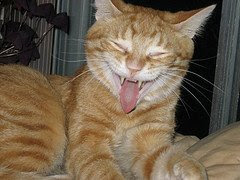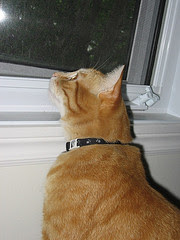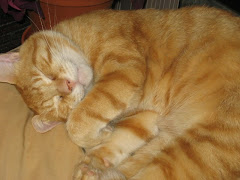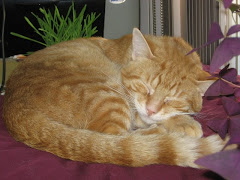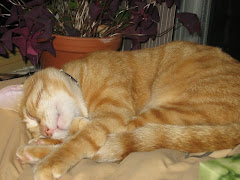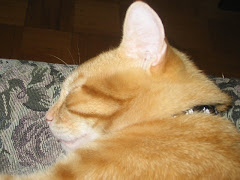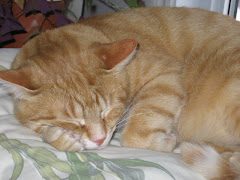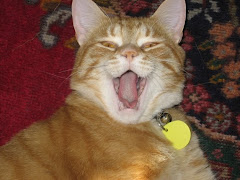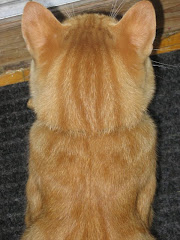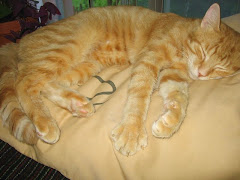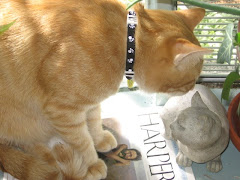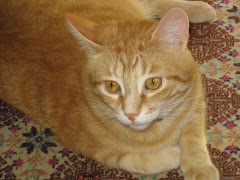
Scholarly Sleuths
Füsun Atalay ~ Copyright © 2004
When Professor Linne Mooney, Visiting Fellow at Corpus Christi College of Cambridge University, identified Adam Pinkhurst as the mystery scribe of Chaucer’s Canterbury Tales last July, the news may have seemed insignificant to many in the greater scheme of things. However, her discovery created much celebration and excitement among the medievalists and scholars of manuscripts around the world.
As far as we can tell, when Chaucer died in 1400, he had not completed The Canterbury Tales in their entirety as he may have planned them. His death preceded the introduction of print by William Caxton to England by seventy-six years. Thus all the early copies of Chaucer's works are in manuscript form. What is known was that, among others, Chaucer had employed a scribe by the name of Adam who made two copies of these tales which have survived until today.
Scholars have long accepted that both copies of these tales were written by the same hand; however, they had no information about the identity (except for his first name), the origins, the home or the work(s) of the scribe.
Mooney’s discovery came as a result of her painstaking work on a catalogue of late medieval English scribes. Her identification of Adam Pinkhurst is based on her analysis of the latter’s handwriting, as he signed his oath upon joining the Scriveners Company of London shortly after 1392, where he was trained in writing and in the correct forms for legal documents.
This kind of painstaking work and unwavering devotion is not unusual for medievalists like Mooney, who teaches medieval English at the University of Maine. Medievalist scholars spend many years of intense research, following minute leads and clues that are indiscernible to the untrained eye. In a sense they are akin to detectives who follow small leads to enlighten our knowledge of the past in literature or history. Like archeologists, they try to reconstruct bits and pieces of the past based on their research and identify history’s contribution to art and literature.
Dr. William (Bill) Schipper, a professor of English and a medievalist at the Memorial University of St. John’s, confirms this similarity. "Every time I look at a manuscript, I see new clues . Although not every one of these is as significant as the one Professor Mooney found," he says, "they often lead to new insights."
Schipper’s favourite clues always come in the margins of manuscripts. "All manuscripts are handwritten books and medieval readers have frequently left traces of their activity such as annotations, or cryptic notes in the margins of these books."
Schipper discovered one such clue in 1993 when he took a group of MUN students to England for six weeks, during which time he persuaded the librarians at the British Library to let him to look at the Benedictional of St. Ethelwald, a beautifully illustrated manuscript book originally made for an archbishop of Winchester during the tenth century.
"Very few people are allowed to see this book in person," he recalls. "But I was looking for annotations in the margins, and the microfilm copy they wanted me to look at first was made from the 1905 printed facsimile which would have made it impossible to see anything of interest."
Thus, the librarians relented, and within half an hour Schipper discovered a number of dry point notes (scratched notes, made with a stylus) which after considerable research on his part turned out to pre-date the production of the manuscript itself, and thus provided an insight into the process by which the book was put together.
No one had ever noticed these despite two hundred years of careful scrutiny, because no one had bothered to look in the margins of this particular manuscript.
Schipper who spent his sabbatical leave this past year at Clare Hall as a Visiting Fellow, a part of Cambridge University, has devoted much of his time to studying the writings of Hrabanus Maurus, a ninth century German monk who was Abbott of the Monastery in Fulda, Germany, for two decades between 822 and 842 AD, as well as the Archbishop of Mainz from 847 to 856 AD.
While studying the letters of Hrabanus, written in Latin, Schipper suddenly began to notice the presence of a personal voice that Hrabanus employs through his use of singular and plural forms of the first person pronouns and verbs.
"At first these seemed arbitrary," says Schipper. "However, in one letter in particular, where Hrabanus begins in the first person plural (we), he suddenly shifts to the first person singular (I) when he reminds his correspondent, The Bishop of Utrecht, that the latter has not yet returned a book, which Hrabanus had loaned him several years earlier. Once he has given this reminder, he switches back to the ‘we’ form in keeping with the rest of the letter."
"That was the clue which alerted me that these shifts from the first person plural to first person singular were not arbitrary, but were careful selections to express his thoughts," says Schipper, as he points out that it is often said "...the personal voice was not something widely used until the Eleventh Century."
That was the "Bingo!" moment for Schipper, who admits it is always a great thrill to uncover the meaning of something that others have either ignored or dismissed.
Another such moment came to him during the 1980's when he was studying some Latin glosses in Old English manuscripts. At the front of one of these manuscripts was half a page of Latin-English word pairs all of which had been crossed out. He discussed these with the late Peter Hunter Blair, a well-known historian, who dismissed them as insignificant.
"I persisted," says Schipper who did not think that they were insignificant.
Thus he started looking up the English words in an Old and Modern English Dictionary when he noticed that there was a correlation between the words in this list and in one of the texts in the particular manuscript he was studying. When he looked at the words in their contexts in the manuscripts, he saw that the Latin part of the word pair had been written above the English words in the text.
What did this all mean?
Schipper’s discovery is indeed thrilling: "It turned out that this list of words that had been dismissed by other scholars was, in fact, the beginning of a Latin - English bilingual dictionary."
Whether it is identifying an ancient scribe, discovering a personal voice prior to the Eleventh Century, or interpreting scribbles from the margins of a manuscript - these are the kinds of things that keep scholars going back to the manuscripts over and over again, feeling certain that studying each line, a crossed out word, or a faded name can bring a new discovery and shed some light on the past.
Schipper agrees. "The kind of seemingly insignificant detective work can prove just as important as mainstream literary criticism, and that’s what makes it worthwhile," he says.
This material is copyrighted © . All rights belong to Füsun Atalay ~ Copyright © 2004


